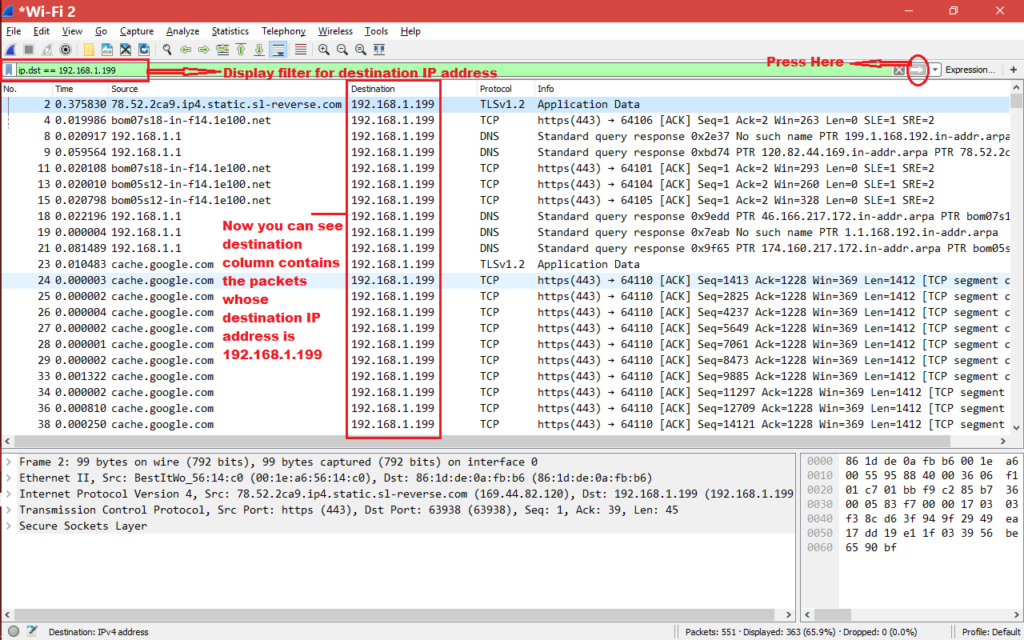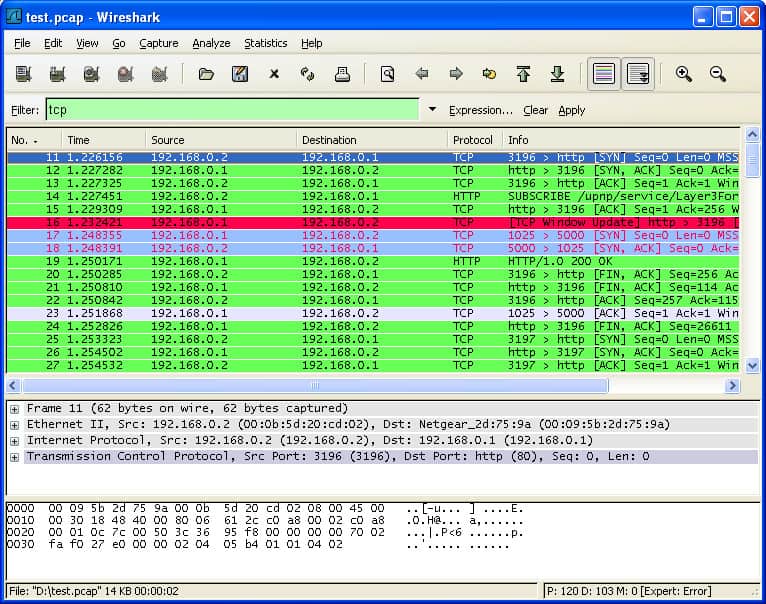


Round-trip min/avg/max/stddev = 3.227/47.187/133.614/61. The simplest display filter is one that displays a single protocol. OK, something wrong.īut even when I ping the device Wireshark shows nothing at that IP address: MyMachine:~ mnewman$ ping -c 3 192.168.0.200 When I use a filter with the IP address of the device (ip=192.168.0.200), Wireshark detects no traffic at all even when I send a formerly working message via UDP. Responder ID list or Request Extensions are not implemented, contact Wireshark developers if you want this to be supported: Label: 1.12.0 to 2.6. I've found it to be a steep learning curve. A friend suggested using Wireshark to check network traffic.

#WIRESHARK HTTPS DISPLAY FILTER MAC#
This was working fine for me for a while and then stopped. To filter out a mac address in Wireshark, make a filter like so: not eth.addrF4-6D-04-E5-0B-0D To get the mac address, type ncpa.cpl in the Windows search, which will bring you here: Right click the connection, go to ‘Status’: Then, go to details: And write down the value listed in Physical Address. One way to do this is by using the filter engine that helps remove the noise from a packet trace and lets you see only the packets that interest you. In this way, only that traffic is stored which you are interested to view. Capture filters are applied before the start of the capturing operation. There is a difference between the syntax of the two and in the way they are applied. You can control the bulb by sending UDP messages at port 55443. There are basically two types of filters in Wireshark: Capture Filter and Display Filter. I'm trying to figure out why the "LAN Control" on a Yeelight "smart lightbulb" stopped working.


 0 kommentar(er)
0 kommentar(er)
